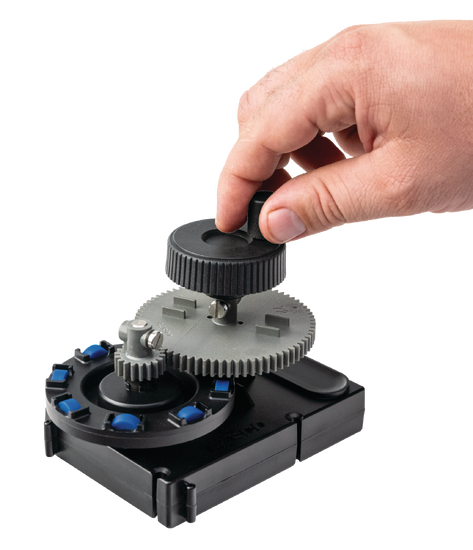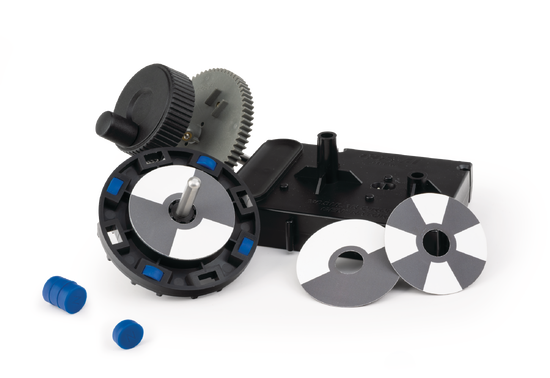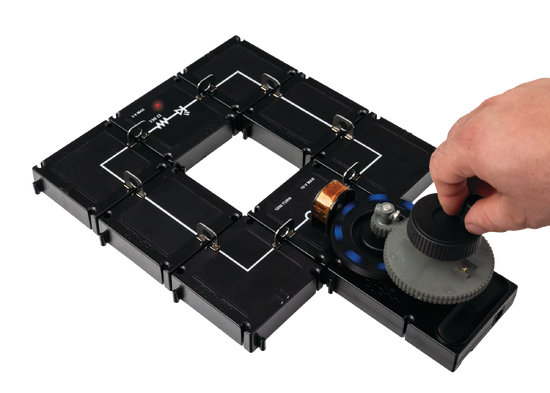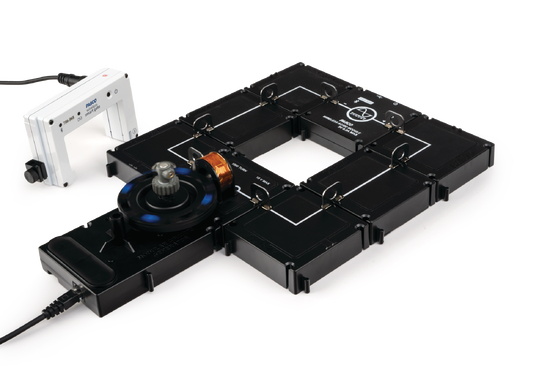Description
This versatile hand-crank generator allows students to generate electrical energy and learn what variables affect the output voltage. The generator works by rotating a series of magnets in front of a coil which induces a voltage in the coil. The induced voltage and current are powerful enough to light multiple LEDs and a mini-incandescent bulb.
Features
- Eight removable magnets allow students to vary the number and polarity arrangement
- Compatible with Modular Circuits coil modules for changing the number of wire turns
- Gearing helps students to control the speed of the rotating magnets
- Measure angular speed using the built-in photodetector with a Wireless Smart Gate
- Works as a motor when connected to the Wireless AC/DC Module
Applications
- Determine which variables affect the induced voltage
- Design a generator for maximum power output based on the circuit load
- Investigate mechanical versus electrical energy
- Create a motor by making the magnets rotate using an AC signal or a Blockly program
What’s Included
- 1x Generator module
- 1x Coated Neodymium Magnets (8 pack) (EM-8849)
- 1x Photogate cable
- 3x Photodetector disks
- 1x Pulley wheel
Experiment Library
- Modular Circuits Generator: Qualitative Investigations
- In this activity, you will assemble a generator and use it to power an LED (light-emitting diode) in a simple circuit. You will then modify parts of the generator and circuit and explore how these changes affect the minimum rotation…
- Modular Circuits Generator: Power Transfer
- In this activity you will use a Voltage Sensor and a Current Sensor Module to investigate how the power output of the Generator is affected by the resistive load connected to it.
- Modular Circuits Generator: Quantitative Investigations
- In this activity you will use a Voltage Sensor to investigate how the output of the Generator is affected by factors such as magnet configuration, the number of turns in the coil, and rotor speed.




